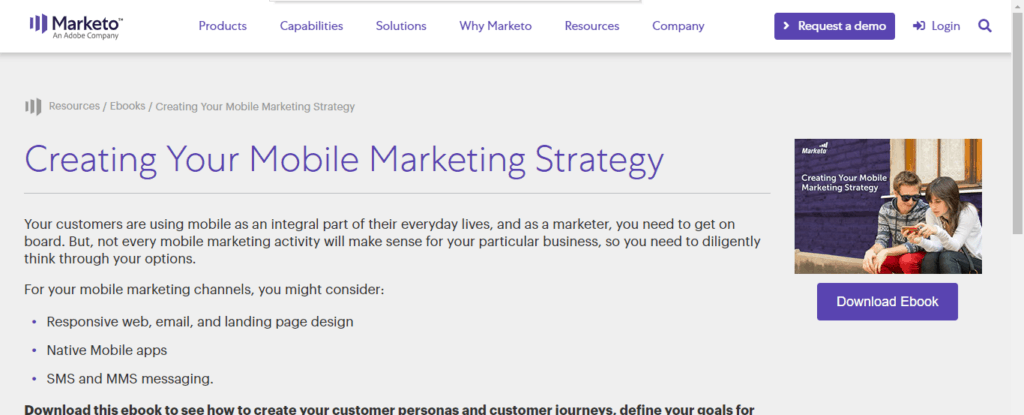There are many aspects to user experience, but one of the least talked about and perhaps most important is content. The content of any website drives the user experience. You can have the best themes, the best graphics, and even a great personalization strategy, but without great content to back it up, the user’s experience can still be very poor.
What exactly can you do about that? How do you structure great content to enhance user experience?
First Impressions
We all know that personalization is one of the primary drivers of modern website design. Subdomains or even unique domains for metro and local areas are common, and there is some debate over which is better for both SEO and user experience.
However, it’s about more than just unique product offerings or different pages, it is also about the tone and language that is used on the page. What might be familiar and casual in the Northwest might be offensive in New York.
Even the simplest of home page greetings or the content on a particular landing page can either turn a visitor away or welcome them into becoming a lifelong customer. For instance, there are many trigger words that are potentially offensive to people groups, but there are also potential trigger words that will cause a user to leave right away. In fact, there are extensive lists of spam words you should avoid on landing pages, in emails, and more.
At the same time, there are other positive trigger words that will keep users on your site. These words are often the ones used by web visitors who are ready to buy. They include words like alleviate, bargain, best, budget, cheapest, comparison, discount, fast, order, renew, etc. Common phrases often include the word “for” followed by whatever people group they are in, whether that is women, kids, children, or the elderly.
Using these words increases the chances your first impression will turn them into a buyer, and avoiding trigger spam words will avoid high bounce rates.

You never get a second chance at that first impression, and wherever a visitor lands on your website, whether that is a landing page or a blog post, the excellence of the content along with its presentation is vital to making a great one.
Staying Power
First impressions matter, but this does not mean that any other part of your web content can be neglected. Great content has the ability to inspire staying power: the longer the user stays on your website, the more likely they are to buy, either this time or at some point in the future.
So how do you get them to stay? Great content is the key. Great content is more than just about correct grammar, spelling, and punctuation, although that does play a role. Great content is also about clear communication, enthusiasm, and engagement.
Your content needs to tell a story, meaning it needs to have a beginning, middle, end, and meaning. The meaning is the point you want to get across to the user on that particular page. A big part of getting visibility for your content is by getting other reputable sites to link to your site. Quality white hat link building is much easier when you are promoting high-quality content.
This meaning can be anything from information about your industry to specific information about your product, or even simply a call to action. That call to action can involve many things as well. From purchasing a product to subscribing to your newsletter, it is good content that compels your reader to stay and become a convert.
Remember, good content is a story, so it also needs to have things writers use in other stories, like a hook, some conflict (their need or want), at least one try-fail cycle (you’ve tried “x” before and it did not work), and a resolution or conclusion.
The story you tell is what moves the reader to action. Without a story, your words are just fluff, and your results will be average or below rather than spectacular.
Conversion
For a website visitor to turn into a customer, they must turn from a searcher to a convert. A conversion can mean a number of things. From subscribing to a newsletter to downloading a free eBook, there are many ways to acquire a customer.
Ultimately, the goal is that the user makes a purchase or uses your service, whether that is a one-time purchase and use, or they become a regular shopper or subscriber.
This means that content on these conversion pages must be both stellar and compelling. This is true from landing pages to product descriptions.
Landing pages and product descriptions are similar, but slightly different. Both are asking for an immediate response, but product pages contain the normal navigation options of your website, and usually contain more information than a landing page.
A landing page is a specific call to action, while a product page is descriptive and can contain more than one call to action. For example, the call to action for a landing page might be simply “Subscribe to our Newsletter.” The product page can include “Add to Cart”; “Add to Wish List”; or “Buy Now” among other things.
Understanding the distinction between landing pages and product pages is an important aspect of effective web design. This is a core principle that the team at almost every top WordPress, Shopify, Wix, or Webflow web design agency takes into account. When constructing a landing page, the focus tends to be on a single, clear call to action, such as “Subscribe to our Newsletter.
These are the essential elements they share.
- Strong Headline: For a landing page, this should be the same as the anchor text that led to it. For a product page, this is simply the name of your product.
- Subheading: This contains more information about the headline. For a landing page, this is a brief summary of what the person who clicked on the link will receive. For a product page, this is a single sentence product description.
- Benefits Summary: This explains either the benefits of the user action (landing page) or the product benefits.
- Features Summary: This is usually only on a product page, and includes more details regarding the product or service for users who need specifications, ingredients, or more in-depth research.
- Call(s) to Action: On the landing page, this is the primary call to action: what you want the reader to do. On a product page these are the items mentioned above: essentially the customer choices.
The content of these elements is key to the user experience and therefore conversion rates. The order of these elements is intentional. It comes down to how human minds work and the things you need to do to influence them.

Here’s an example of a good landing page from Marketo.
A Fond Farewell
When your visitor leaves your site, you want them to want to come back. If at all possible, you want to leave them with a fond farewell: a thank you with an offer to return.
This is challenging, and rarely done well except at the checkout process. Many sites now have pop ups that appear when a reader moves the cursor toward one corner or another as if they are going to exit.
These are often disruptive to the User Experience, and they rarely contain the right kind of content. Most of the time, they are another call to action. “Before you go, subscribe here” or something similar. The truth is, these should be a simple statement if they are included in the web design at all: “Thanks for coming. We hope to see you again soon.” Simple, and not a plea to stay, but instead an invitation to return later.
User Experience often gets buried in the details of design, responsiveness, AMP compliance, and more. All of these things are important, but without great content to go with them, the user experience will not be ideal.
Remember, the things that irritate you and cause you to leave a website will also irritate your user, and the very things that inspire you to stay on a site will inspire your users too. User experience is about that user, and you are a user too. Full screen pop-ups, insistent calls to action, and spammy content turn you off, and they will your users too.
Your content is a vital part of your site and its ability to convert users. The way you tell your stories, the words you use can make or break the user experience.
